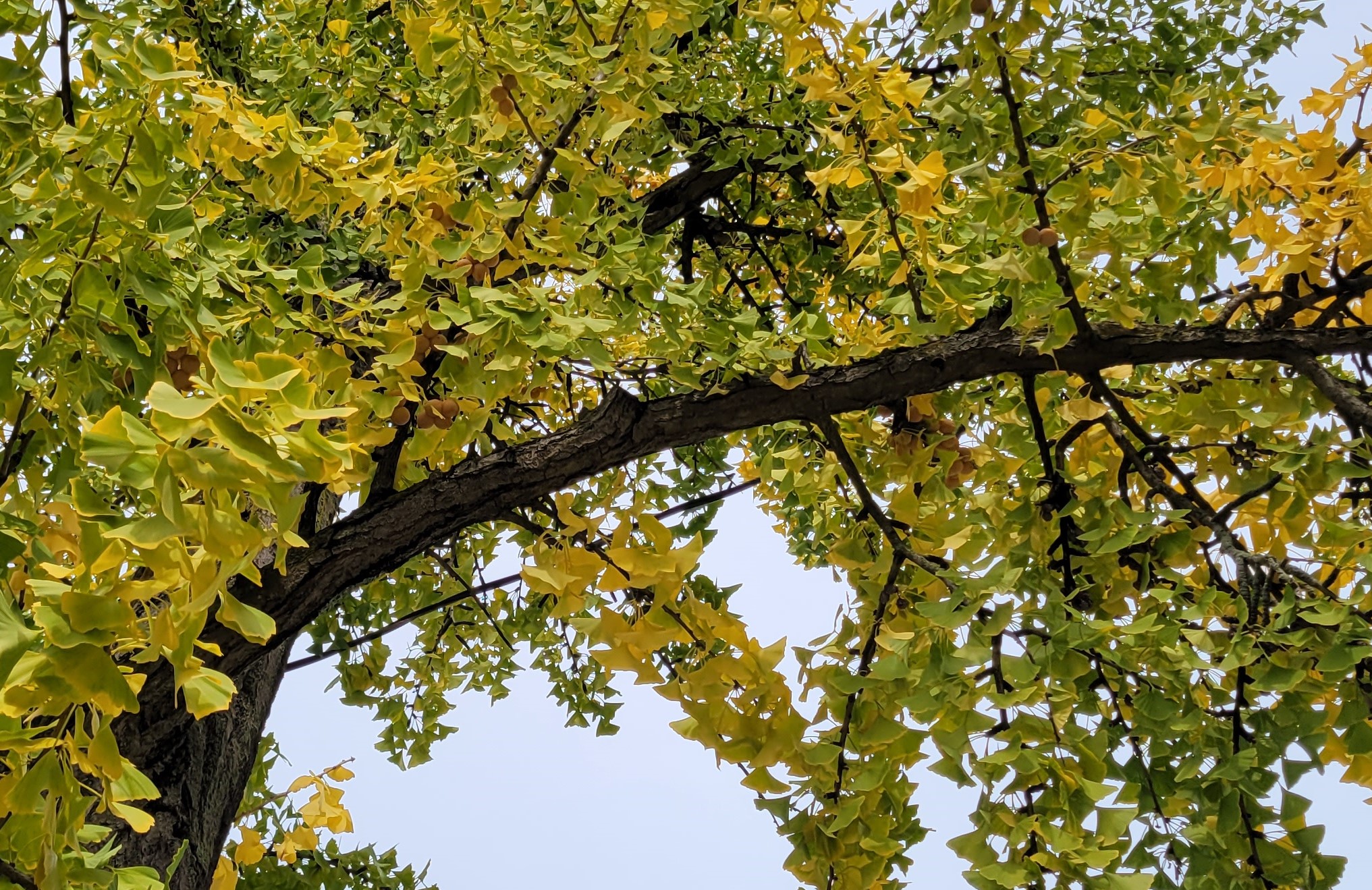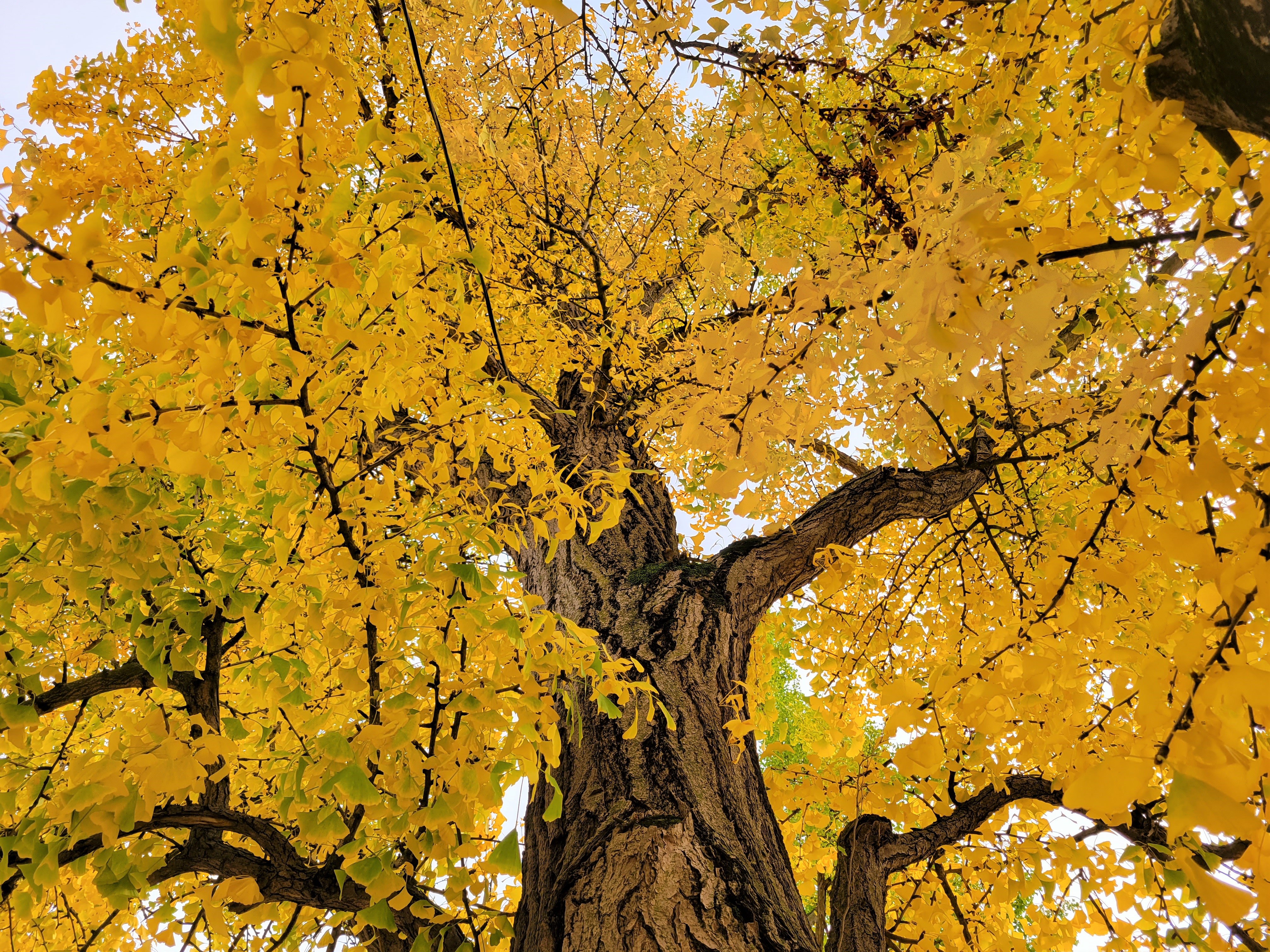Blog

#bioPGH: The Splendid and Stinko Ginkgo
 A resource of Biophilia: Pittsburgh, #bioPGH is a weekly blog and social media series that aims to encourage both children and adults to reconnect with nature and enjoy what each of our distinctive seasons has to offer.
A resource of Biophilia: Pittsburgh, #bioPGH is a weekly blog and social media series that aims to encourage both children and adults to reconnect with nature and enjoy what each of our distinctive seasons has to offer.
As of posting time, Schenley Drive in front of Phipps is lined with ginkgo trees in their vivid display of yellow leaves! Ginkgos are a somewhat common urban and suburban tree, but don’t let the familiarity fool you: these living fossils are truly an ancient species! Ginkgos first arose during the Permian Period (298-250 million years ago), and our modern day ginkgos look strikingly similar to their fossil ancestors from 200 million years ago! But legendary persistence isn’t the only amazing thing about these trees. Their antiquity is accompanied by surprises and delightful mystery — and perhaps a bit of stinky thrown in. Let’s explore!
Besides the beautiful yellow leaves, this time of year ginkgos are also know for a slightly less sweet surprise: the “fruit” some of the trees produce. But the “fruit” isn’t actually a fruit at all, botanically speaking. True fruits are the seed-bearing ovaries of angiosperms — a group of plants classified based on their “protected seeds” (angiosperm literally means “protected seed”). Instead, ginkgos are in a group of plants called gymnosperms — non-flowering plants that include conifers and cycads (the word gymnosperm means “naked seed”). So if those stinky little “fruits” aren’t actually fruit, what are they? The fleshy, stinky material is actually a seedcoat called the sarcotesta, rather than the ovary of the plant, as in true fruits. But even if the seedcoat smells less than appetizing, the seeds themselves are edible! As long as you avoid the seedcoat, which can irritate skin, we can safely eat up to ten ginkgo nuts per day. Here is what Alexis Nikole Nelson, aka the Black Forager, has to say about prepping ginkgo seeds!
@alexisnikole Replying to @Tineebeequeen ROASTED GINKGO NUTS #ginkgobiloba #fallrecipes #foraging ♬ original sound - Alexis Nikole
And if you were wondering about the sex (and sex-changing!) of ginkgos, Alexis is absolutely correct. Ginkgo trees are dioecious, meaning the respective “male” and “female” reproductive parts develop on separate plants, as opposed to monoecious, where all reproductive parts occur on the same plant. Across the plant kingdom, dioecy is rare, making up only about 6% of plants. Within those dioecious plants, the genetic strategy for sex determination varies widely, but ginkgos exhibit a similar sex chromosome situation to humans. For humans, XX and XY chromosomes play a large role, but not the only role, in whether an individual is biologically male or female. Sex determination is an amazing combination of genetics, gene expression, hormone production/sensitivity, and more. Similarly, ginkgo females often have matching sex chromosomes while males have two different sex chromosomes; and the sex-determining-region of that second chromosome seems to be a collection of over 200 genes. It’s not fully understood why some ginkgos are able to transition from male to female and vice versa, but there is most likely some sort of environmental cue involved. Most likely, a combination of genes are activated and suppressed, and the outcome is that either entire trees or even just some branches on a tree can change sex and produce seeds instead of just pollen! How awesome cool?!

Fruits on one of the female trees outside of Phipps.
As a side note, ginkgos are certainly not the only plant with a bit of sex flexibility. Our spring wildflower jack-in-the-pulpit is also dioecious and can change sex multiple times throughout its lifetime, and our native striped maple tree is a sequential hermaphrodite, meaning it changes male to female or female to male at some point in its lifetime or in response to damage. Even monoecious plants have a little flexibility; for example, some types of pond weed can change the ratio of male to female flowers they produce in response to the density of male versus female flowers in their habitats.
So the next time you see a ginkgo this fall, give him or her (or both!) a little tip of your hat. An ancient species with some amazing biology and gorgeous fall colors gives us a particular brand of age, beauty, and fabulousness that we can all admire!

Connecting to the Outdoors Tip: The leaves of our local ginkos will probably fall over the next few days to a week - be sure to catch the yellow while you can!
Resources
Gong et al 2022: Evolution of the sex-determining region in Ginkgo biloba
Du et al. 2016: Transcriptome Profile Analysis from Different Sex Types of Ginkgo biloba L.
Bachtrog et al 2014: Sex Determination: Why So Many Ways of Doing It?

